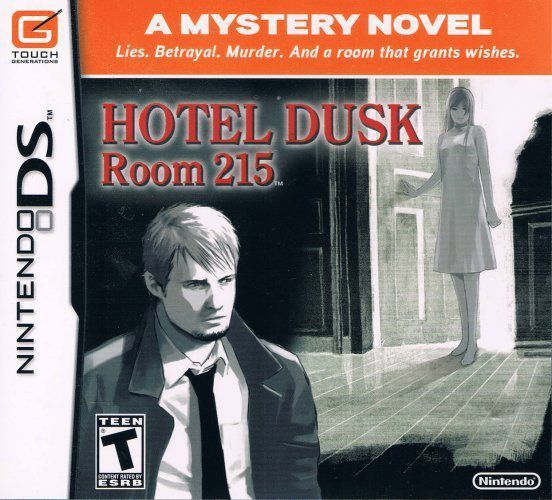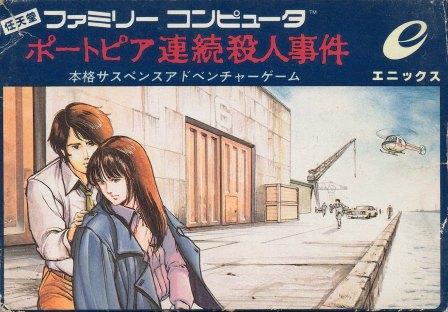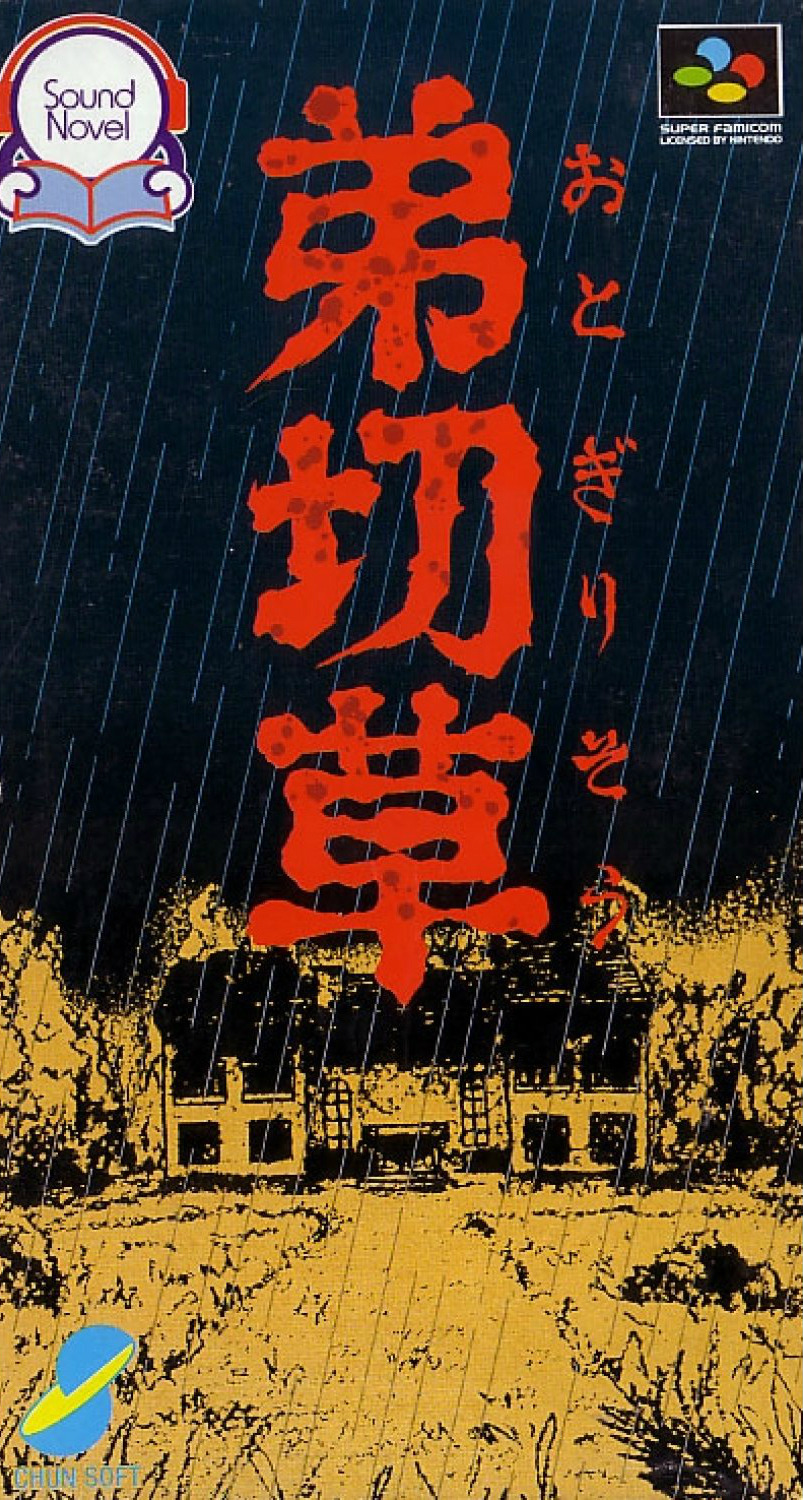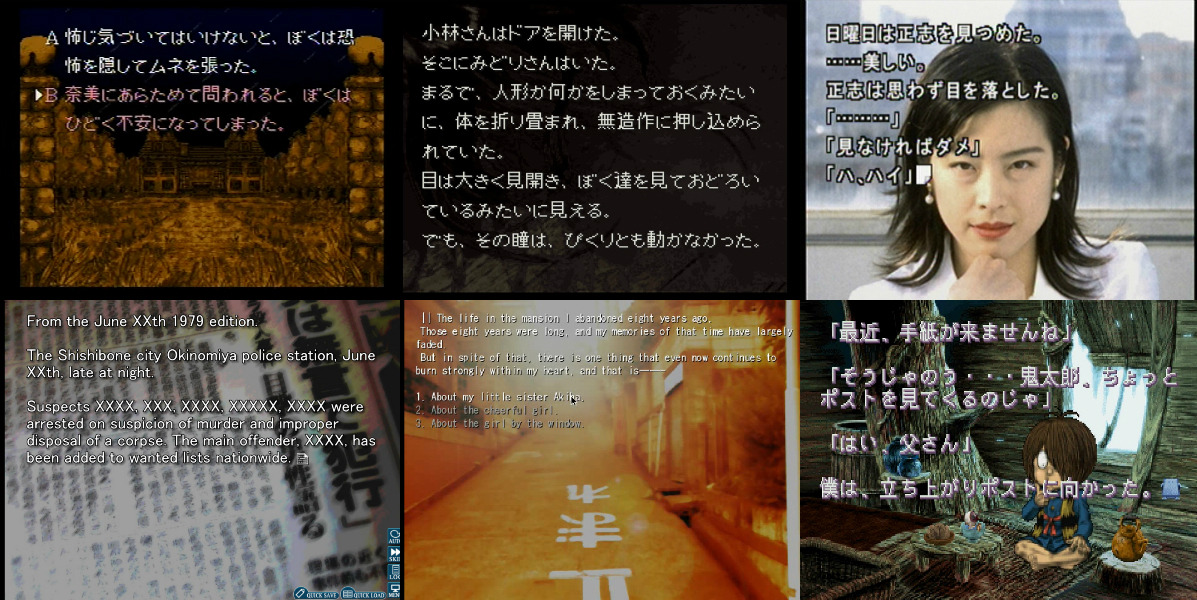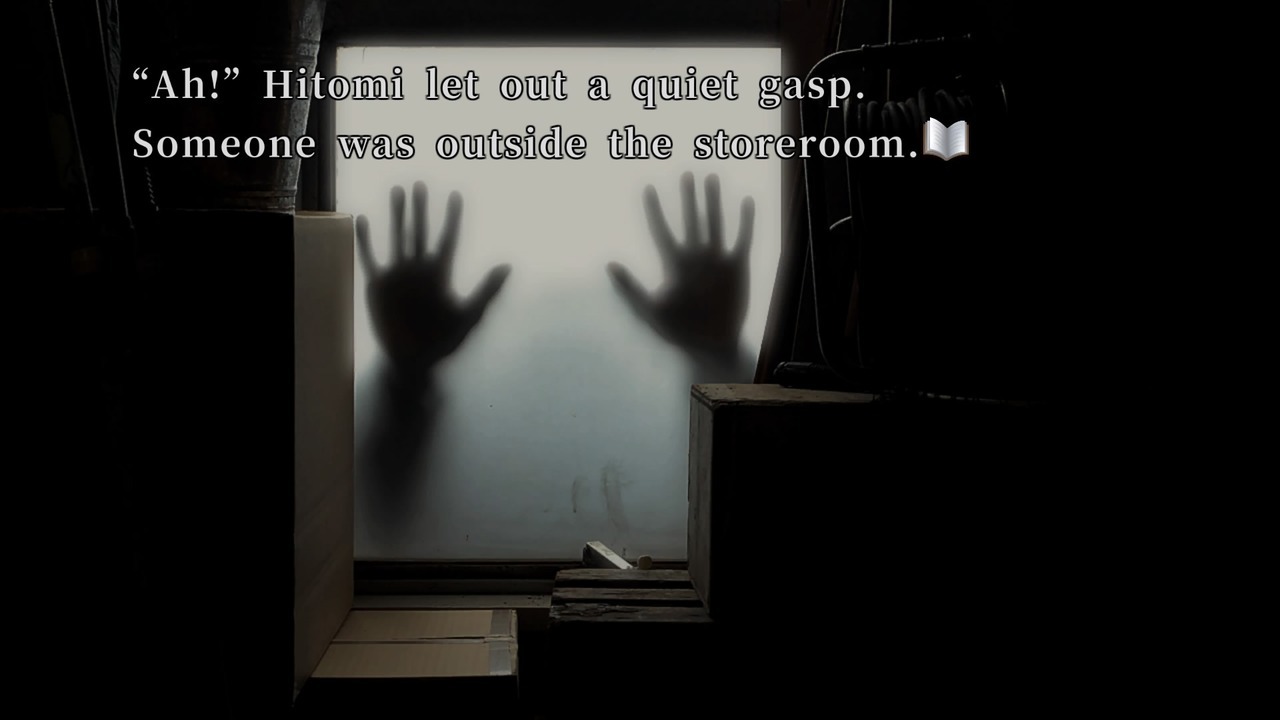I remember when visual novels weren't quite known as well as they are today. By no means are visual novels a mainstream genre of video games--in fact you won’t be hard pressed to find some “expert” try to argue with you over how they are not games at all--but their notoriety is far more than that of even just ten years prior. For the longest time visual novels were seen as just an anime fandom “thing” that mainstream gamers paid no mind to. Very few titles were discussed outside those that had animes be it a TV series or an erotic OVA, and even some of the earliest visual novels localized into English were done so by anime and manga translation companies and not actual video game publishers.
If I had to pinpoint a time in my own memory where the genre started to get noticed more it would be when the Nintendo DS took off. With the DS there was an increase amount of western releases for visual novels thanks in large part to its touch screen interface working well with adventure style games. This wasn't just noticed by Japanese developers either as a fair share of American and European made adventure style games were developed for the console as well. It seems everybody was anxious to utilize the system’s unique features when the DS started soaring in popularity. The point ‘n click and visual novel genres really had a home on the DS, and because of that a lot of people outside of just the anime community got a taste of these kinds of games with beginner friendly titles such as Ace Attorney, Trauma Center, and Hotel Dusk.
However, despite the Nintendo DS (and later to a lesser extent the PSP and PS Vita) giving gamers a finely curated and easily digestible dose of the genre I’d say the sad thing is the push was pretty small and died out quickly. Instead what seems to be the biggest reason why most video game outlets nowadays talk about visual novels are because of the parody dating sims that started to grow in popularity. Hey, do you want to date some monster? Is your girlfriend a llama? Maybe all you need in your life is to date a pigeon. Don’t try to hide it, we all know you secretly wish you could go out with a YouTuber. Not into dorky millennials, well no problem, we got a game for you--that is if dating other people’s dads is a you thing. Yes, this is the era of the wacky, silly dating sims taking over in the English market. It wasn't always like this however, and yes Japan has had a long history of doujin dating sim parodies themselves, but lately it feels like all people know are the parodies that make good YouTube videos to react to instead of what a large amount of the games in the genre can offer.
Don’t get me wrong however, I’m by no means saying parodies do not have a place nor should they stay out of the limelight, and I definitely love that this fad has ushered in a wave of indie made English titles--but simply put this wave lacks so much variety and has been stretched so thin by this point. For every one creative title that pushes boundaries and gets new people interested in visual novels there are ten bland titles spilled all over Steam that feel like they were made by people with barley a grasp on what a visual novel can be outside of either parody dating or “boobies are pretty awesome”. Some of these bland games are even really well made and have a lot of care and attention added to their interfaces and artwork, but when push comes to shove, they are still just a basic joke stretched to its thinnest level. Visual novels don’t have to be that however, and while most mainstream gaming outlets may still be joking about how great it is to date your kitchen appliances, you don’t have to (unless you want to, in which case I recommend dating the toaster for he is the bravest of all kitchen dwellers).
A lot of this misunderstanding can be tied into the nebulous relationship between visual novel and dating sim, two “genres” that many people debate are separate things entirely yet due to the overlapping nature of the two they are often confused for each other. There’s a great article by Brian Crimmins online that actually goes into heavy detail about how visual novels came to be as a genre and how over time both visual novels and dating sims affected and evolved each other. It’s a wonderful read that I really recommend it for anyone curious about games such as these, but either way, whether or not you think visual novels and dating sims are the same thing or should be counted as separate but similar genres of games; it certainly doesn't seem to stop most western gaming outlets reporting solely on gag dating sims as visual novels and taking away a majority of people’s attention from so much more that these games can offer.
 |
| I take back all my complaints |
Chunsoft is one of the many long standing Japanese developers that have been around for every major home console since the Famicom. Nowadays they are known as Spike Chunsoft after their merger with Spike Co. in April of 2012. For the sake of this blog post however I am mostly going to refer to them as Chunsoft still given everything I really want to talk about predates the merger. Chunsoft’s involvement with Japanese style adventure games and visual novels more or less are tied to the very beginning of the genre. There isn't quite a de facto known “first” visual novel per se, but most fans put the starting line at around 1982 or ‘83 depending on which game they may be talking about and which source they want to use for the release date (remember release dates were not entirely clear back in these early days).
One of the earliest contenders for this honor is Yuji Horii’s adventure game The Portopia Serial Murder Case (Portopia Renzoku Satsujin Jiken), a game that was based around Horii’s interest in western style adventure titles, much like Horii’s later known legendary game Dragon Quest was based around his fascination with Wizzardy and Ultima and how to replicate those games in an easier to understand interface for his home nation. It’s here we can see “visual novel” wasn't even a blip on the radar yet, and there was no definitive understanding of what genres for games really were at the time. Portopia proved to be a major hit during its release however and lives on even to this day as a fondly remembered game (and also a Japanese internet meme). Chunsoft handled the porting of the title to the Famicom and this was the beginning of a long business relationship between Chunsoft president Koichi Nakamura and Enix’s own Yuji Horii as in the years to follow Chunsoft would develop the first five entries in the hit Dragon Quest franchise for Enix.
With the birth of the Super Famicom things began to change between both Enix and Chunsoft. Having developed games primarily for the publisher Enix Chunsoft felt they should move into their own publishing, and soon got certification from Nintendo to do so. After slaving away on four Dragon Quest titles on the Famicom, and also working on the fifth title for the Super Famicom, most of the employees at Chunsoft were burned out so they decided their first self published title should be a simple game. Koichi Nakamura wanted to help make gaming more accessible at the time and took both the team’s exhaustion and his desire for a more casual audience into consideration when they moved forward.
The title Nakamura needed to make had to be simple; a game that anyone could be able to figure out to navigate--even those intimidated by a controller, but despite that also needed to take advantage of the more powerful hardware of the Super Famicom by using Kanji scripts which again would make the experience easier on casual players who had trouble getting into video games because game consoles prior could only display text entirely in Hiragana or Katakana making the reading experience poor and hard to enjoy for Japanese players (see Japanese writing systems for more details). To all these ends the team at Chunsoft decided to create a game entirely around reading to tackle this Hiragana issue and show off the hardware (or at least the hardware’s Kanji capabilities) while also being something anyone of any gaming skill level could enjoy. The game would mostly be text for the player to navigate through and present choices at key moments in the story to advance, cutting out any complicated aspects from western adventure style games that might intimidate the unfamiliar such as solving puzzles or finding hidden items. This is how Otogirisō was born.
Otogirisō (Japanese for St John Wort) was Chunsoft’s very first sound novel, a nomenclature which has since confused the hell out of everyone. But what exactly is a sound novel you may ask? Well, people get kind of convoluted about it. Looking at the definition currently found on Giant Bomb a sound novel can be defined by its heavy reliance on sound effects and music to create a game's atmosphere. Usually sound novels will use minimalist visuals and choose to emphasize the text over the artwork presented on screen--most commonly covering the entire screen in said text instead of keeping text only contained in a dialogue box. Something among these lines is the definition usually seen online when you look into it. It’s not entirely wrong either, but it’s also missing something to it. The term sound novel is a creation of Chunsoft themselves, and something they own a copyright on, this is also often brought up when you search sound novel, but at the time of its creation sound novel was meant to be something really easily understood and not this tangled mess of “a certain kind of visual novel”.
When Chunsoft first created Otogirisō the brand sound novel was added to its box in order to help potential customers understand what kind of game it was. At the time it was just a way to let people unfamiliar with adventure style games (more commonly found in the west) to understand that this title will largely feature reading. In fact when Otogirisō was originally shown to the press in a 1991 Nintendo Space World show the game looked radically different from its finished project. Otogirisō was presented mostly as a book that the player would read, pretty much just like modern e-readers are now, with the exception that it included some sound effects and music. The press at the time was underwhelmed by this so Chunsoft took the game back to the drawing board and created unique visual backgrounds to give the game more flair and in doing so set a certain precedence for future visual novels to follow in.
An important factor to remember here is there was no clear cut way to define games such as these yet. The term visual novel had not yet been coined, and even gamers themselves were not very well aware of genres. As Nakamura admits in a Famitsu interview when asked about the creation of sound novels, “if you look back at the very beginning of video games, for me, the conception of “genre” didn’t exist. Take action games, for example: within that label you had shooting games [note: Shoot ‘em Ups], you had stuff like Pac Man and Dig Dug, and you had more puzzle-y games too. It was very diverse. On the same note, with adventure games, there were Ascii Magazine’s games like Ometesandou Adventure and Minamiseizan Adventure, which were pure text adventures… but you also had things like Mystery House, which had a few pictures, or war simulation games like Fleet Commander. I played all those, and while I recognized there were many different types of games, I never thought about it in terms of genres.” So basically, at the time sound novel was conceived it was just meant to be the most straightforward way to define this Japanese style of adventure gaming that Chunsoft was trying out on the Super Famicom.
But does it end there? Well no. That’s only the part of the answer. Otogirisō ended up being a modest sleeper hit upon its release and this lead to Chunsoft to making more sound novels, with their next title being a legendary game that has since eclipsed Otogirisō as the de facto sound novel; Kamaitachi no Yoru (Night of the Sickle Weasels). This game was a hit, there’s no easy way for me to describe just how big it really was back during its release--out of the pantheon of legendary Japanese games that people in the US and Europe know jack about Kamaitachi no Yoru is one of the highest. Kamaitachi no Yoru is a fantastic game and I talked about it ad nauseum a few years ago when I payed the localized version called Banshee’s Last Cry, check that out if you’d like to know more, and if you’re still somehow able to play it then you’re definitely in for a darn good time.
With the a string of successes in the visual novel marketplace after both Otogirisō and Kamaitachi no Yoru, Chunsoft kept churning out games over the years, many of which are highly respected by the fandom still such as Machi and 428: Shibuya Scramble. All these releases of theirs had a certain tone and atmosphere, not to mention a distinct presentation that didn’t change much over the years and because of that did not look like what visual novels typically look like now. There’s a certain charm and narrative style between all of Chunsoft’s sound novels that is a really strong defining link in their catalogue despite a lot of these games being stand alone--and because of that people come to expect certain things upon seeing the term sound novel. Many titles would eventually come out not made by Chunsoft that shared similarities to their brand--these games followed in the footsteps of Chunsoft’s tone, structure, style, and presentation--and people began to notice, the most famous of which being 07th Expansion’s Higurashi doujin series. This is where we begin to see that murky kind of convoluted aspect of sound novels, as they start to transcend a basic label put on a box almost three decades ago and turn into their own little sub genre or maybe better described as their own style of visual novel.
So what the heck is a sound novel then? The simplest answer is a sound novel is a dated term that Chunsoft used regularly and has since fallen out of use for visual novel; the more complicated answer is that sound novels are both a term used by Chunsoft for their brand of visual novels back before the term visual novel existed and also a certain style of visual novel that is mostly inspired by the early Chunsoft games’ presentation and ambiance.
Over the years Chunsoft has expanded, changed, and moved beyond their sound novel brand. Despite this however, they have never really stopped putting out solid titles in the visual novel market, and it seems like each new generation of gaming is blessed with at least one visual novel of theirs. My personal favorite title out of all their work from this era would definitely have to be 999: Nine Hours, Nine Persons, Nine Doors on the Nintendo DS. It was because of this game in particular that my love of visual novels in general really started, and Kotaro Uchikoshi’s sharp writing--especially the incredible dialogue and thorough thought narration in protagonist's Junpei’s head still stands at the peak in my mind. Throw in beautiful sprite work based around art from legendary Capcom (and now freelance) artist Kinu Nishimura, and a fantastic soundtrack from the man himself, Shinji Hosoe and you got yourself a meeting of some fantastic minds. I've written about 999 in the past, and you can read about it here, but I still want to write more about it in the future, especially tackling the latest release it got in 2017’s Zero Escape: The Nonary Games.
Recent years have seen Spike Chunsoft make it big with their Dangan ronpa franchise, admittedly however the first Dangan ronpa title should be more attributed to Spike, as the game was released in 2010 two years before their merger. However the two companies together as one have since released three more Dangan ronpa games, and two (or is it three?) Dangan ronpa anime titles, and many, many rereleases and compilations. My own interest in the franchise isn't nearly as strong as everyone else’s seem to be but I did however absolutely adore the last game, Dangan ronpa V3, with how many times it managed to jump the shark, upping the game, and constant plot twist after more ludicrous plot twist. If there was ever a way to end something like Dangan ronpa it was what that game did, and oh boy did I get a kick out of that.
Finally moving past Dangan ronpa, 2019 will see Spike Chunsoft develop and publish Kotaro Uchikoshi’s newest game, AI: The Somnium Files, for the Nintendo Switch, PS4, and Steam which just got its newest trailer and release date announced earlier this week. I am very excited for it personally and love the intricate and complex alternate reality game type marketing the team has been using to build up to its release! This is some next level stuff, and has been tons of fun all on its own.
Then there’s of course one more game I simply cannot pass up mentioning, 428: Shibuya Scramble. Now I briefly spoke this title earlier mentioning later sound novels that have been highly acclaimed, and trust me 428 is definitely beloved; its perfect score in Japanese gaming magazine Famitsu really meant something back in 2008 on the Wii. But why mention this with recent Spike Chunsoft games? Well the answer is easy, 2018 saw the much beloved, super Japanese game finally get an American and European release! And much celebration was had! If anything in this whole blog post remotely sounded interesting to you I really implore you all to go check it out either on the PS4 or Steam, and see what a Chunsoft sound novel is all about. And for the impatient, I will be writing about it next on blog!
Despite Chunsoft changing over time and no longer using their sound novel brand, they have still put out many classic and fantastic games in the visual novel genre. Their later work may take a radically different presentation from their prior titles, but despite their moving away from that set style there are still other developers out there that keep up that mantle. Overall I think the effect Chunsoft has had on the genre is undeniable and anyone missing out on their catalogue of fantastic titles are really missing on some of the best titles visual novels have to offer. That’s why I really wanted to write this blog post about them and put into words my thoughts about this developer’s library that just seems so often overlooked by many others in the fandom, at least in my experience. I hope through all my grumbling, and “kids today” rant I was able to at least get somebody interested in trying out one of their games.


